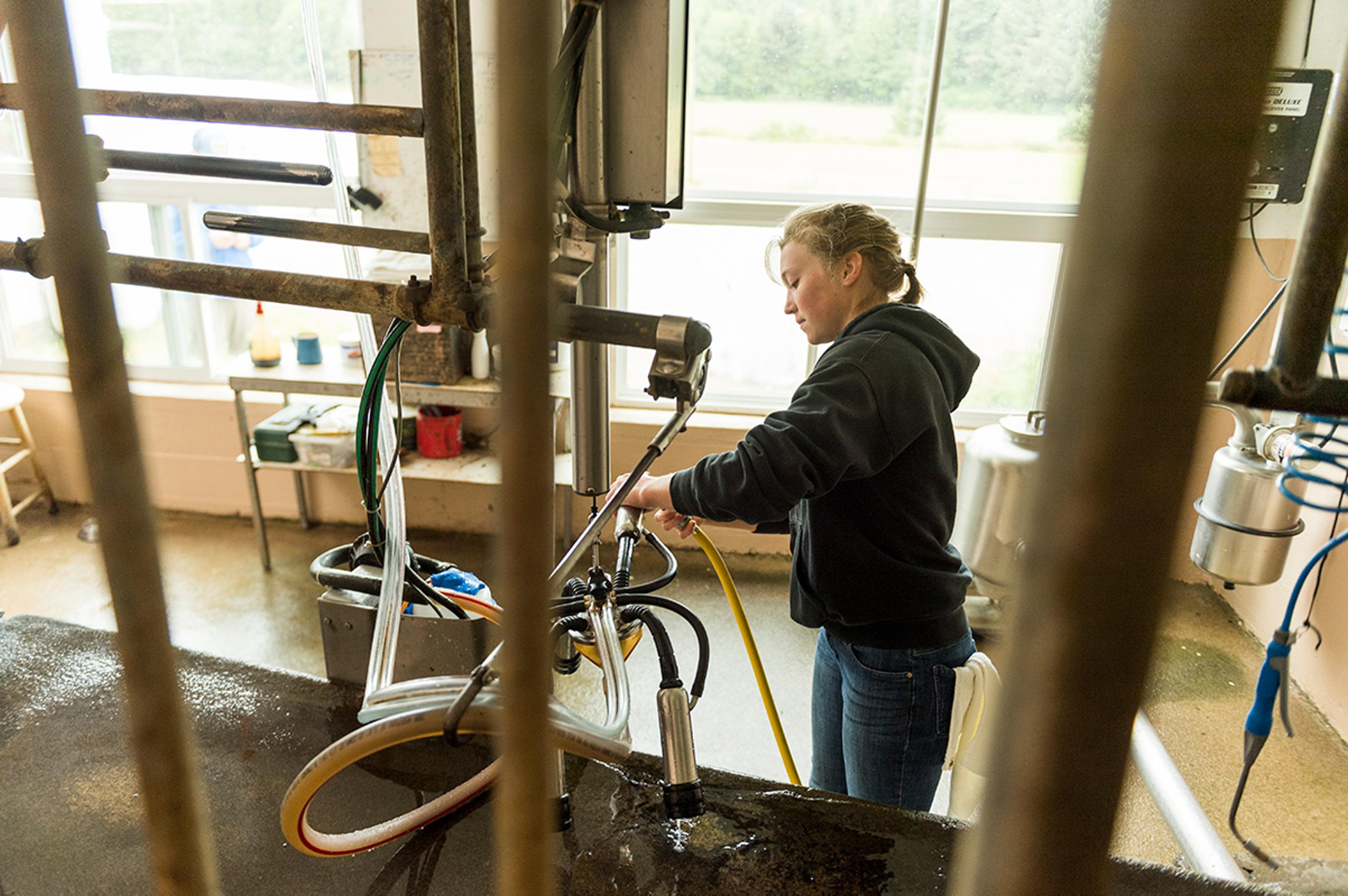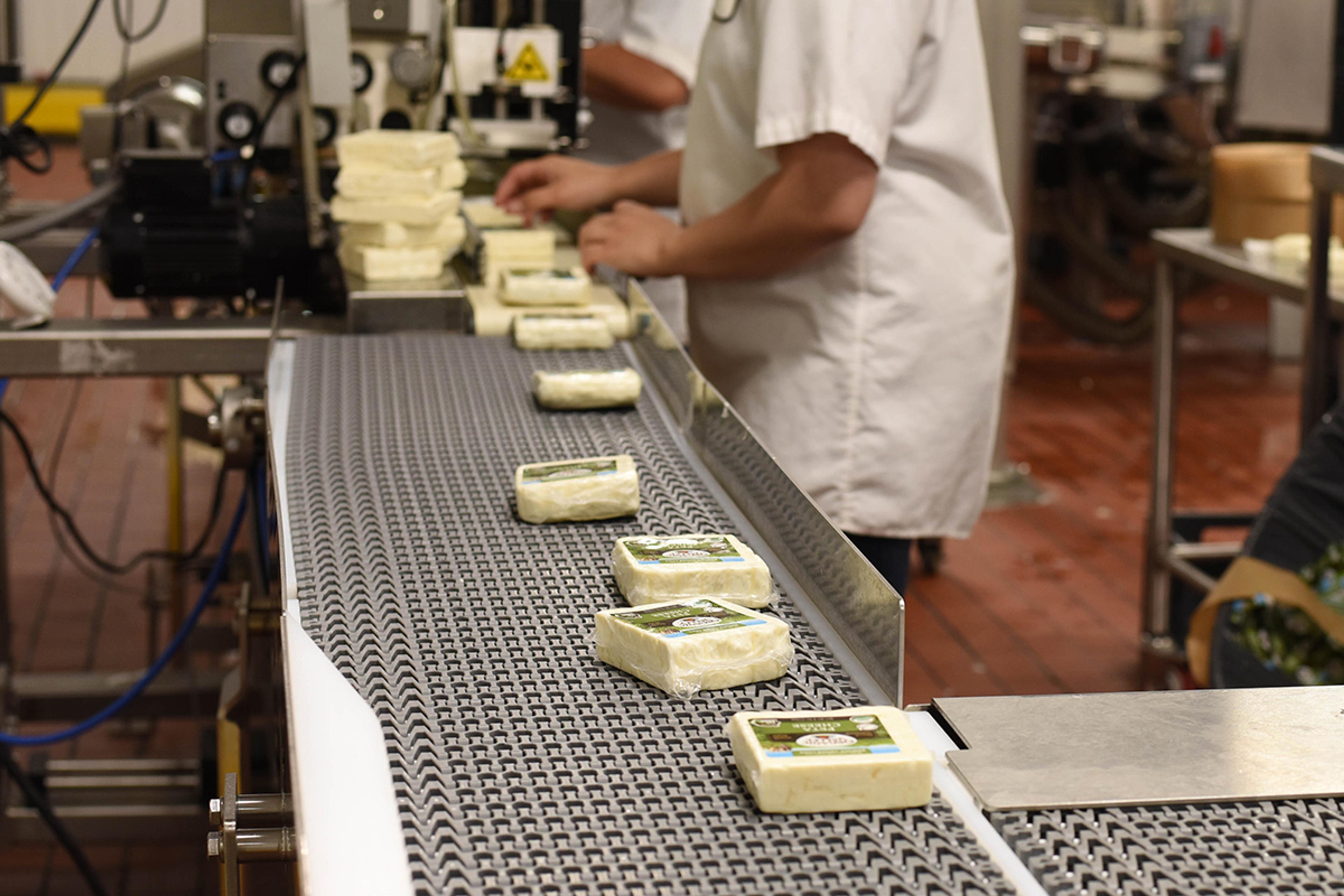
Food
What Does Quality Mean to Us? 57 Quality Checks, Farm to Shelf
Think your kids are picky? Here’s how picky we are about our milk! From our farms to your fridge, our milk goes through an extensive list of quality checks—57 of them. Yep, you read that right: 57.
Quality is something we stand by here at Organic Valley. We believe that when we put love into our farms, you get love out in the form of the highest quality products for your table. It’s just one more way we raise the bar on organic. Let’s learn more about what goes into those 57 checks!
Here’s the TLDR…
Step 1: On-Farm Bulk Tank and Lab Testing
The first of our checks starts at the farm. Our farmers check each cow for abnormal milk before they attach the milkers, and they inspect their equipment for cleanliness before and after each milking. Once the cows are milked, their raw milk goes into a refrigerated “bulk tank.”
When the milk is picked up, the milk truck driver visually inspects the milk for its condition and to be sure there’s no foreign material in the bulk tank, and they take the milk’s temperature to make sure it’s 38 degrees Fahrenheit or lower. Then a sample is pulled from the bulk tank and sent to an independent, third-party lab, where it tests for multiple types of bacteria, antibiotics, butterfat, protein, lactose, other milk solids, odor, and a number of other very technical things.
Fun fact: These quality results are incredibly important not only to milk-drinkers, but also to our farmers—they get pay premiums (a type of bonus) for high quality!

Step 2: Milk Truck Testing During Receiving
Milk trucks pick up multiple farms’ milk along their route. When the milk truck gets to the receiving facility, the load is tested for condition, temperature, bacteria, butterfat, protein, total milk solids, added water, and the presence of antibiotics (required by Food and Drug Administration regulations for all milk, organic included).
Keeping dairy products cool is critical to maintaining the quality you expect from us, so you’ll notice that temperature is tested at nearly every step. The truck is also checked to ensure its security seal is intact and there is no foreign material in the tank.
Step 3: Pre-processing Testing at the Plant
At every processing plant, the milk is tested yet again for bacteria, antibiotics, butterfat, lactose, milk solids, temperature, odor, foreign material, and various tampering. It’s also tested for pH, examined under a microscope, and put through a special testing program that may be seasonal or circumstance-based.
Step 4: Processing & Packaging Checks
As our milk gets pasteurized and packaged, we do an extensive 13-point check to verify proper pasteurization and for butterfat content, titratable acidity, temperature, various bacteria, moisture content, taste, odor, and weight. We even check the carton, parchment, and cases to ensure our products will get to their destination in great condition. The code dates (aka “best by” dates) and lot numbers indicating when the product was made are verified to make sure they’re correct. These codes help us trace a product back to where it came from if we ever need to.

Step 5: Finished Product Checks
Our milk is now in its finished form as packaged milk, half-and-half, whipping cream, butter, protein shakes, and many more. These finished products go through 10 more quality checks, including a shelf-life analysis. Many of these repeat tests are done in previous steps because they’re that important to delivering food that will meet our customers’ and consumers’ expectations.
Step 6: Corporate Finished Product Checks
Before it’s shipped to a retailer or distributor, our products are tested again for many of the same checks that happen in Step 2. Products processed and packaged at our owned facilities here in Wisconsin are tested at our central lab in Cashton, Wisconsin. Products manufactured at our partner co-processors all over the United States are tested at their internal labs or by a third-party lab. Our Quality Assurance team also saves a sample from every single lot of every single product, which is used for shelf-life analysis, packaging integrity, and to refer to if there are any complaints.
Step 7: Retailer/Distributor Checks
Upon receiving Organic Valley products, retailers and distributors check that the product was received without damage, they check security seals and verify code dates and lot numbers, and they check the temperature (again!) to make sure the shipment was refrigerated correctly. After all those are confirmed, the product goes onto the retailer’s shelf and has almost made it to your refrigerator!
Step 8: Consumer Checks
Finally, we track any retailer, distributor, consumer, or processing plant complaints. Our Customer Relations and Consumer Relations teams answer each and every question, and they pass quality concerns on to those who can address potential issues, like our Quality Assurance or Research & Development teams.

That’s the short story. OK, it’s not that short, but 57 quality checks from farm to shelf is a long list. If you want to stop here, we totally understand!
But for those of you who want all the details, we’ve got you covered.
Read on for a deeper dive into our 57-point milk quality checks. We’re providing this information because we believe in transparency and that you deserve to know how we ensure the safest and best-tasting milk ends up on your table. Plus, we’re pretty darn proud of the effort our farmers and employees put into bringing your family top-quality milk!
Standard Plate Count
SPC is the measure of the total number of bacteria in the milk. If this number is high, then it means the farm’s equipment or cleaning procedures are not up to Organic Valley’s standards and the milk may be rejected. If a farm has ongoing issues with high SPC, Organic Valley has an improvement program that helps farmers figure out where the issues are and fix them. Our goal is to help our farmers have the healthiest cows who produce the highest quality milk so that they can earn the best income they can—and so our consumers get the best milk on the shelf.
Preliminary Incubation
PI is a test that can detect bacteria that grow in cold environments.
Laboratory Pasteurization Count
LPC values indicate the number of bacteria that can survive laboratory pasteurization at 143 degrees F for 30 minutes. If these bacteria survive past pasteurization, it could decrease milk shelf life. Notably, this test is not required by all state or federal agencies, but Organic Valley requires it for all our farms nationwide. It’s one of many ways we go above and beyond for high-quality milk!
Antibiotics
Antibiotics are not allowed to be used in organic production*, so if they’re detected in an organic farm’s milk, that milk is rejected and can’t go into Organic Valley cartons—no exceptions.
Somatic Cell Count
SCC is a strong indicator of milk quality but also of a cow’s health. If the somatic cells are high, it usually means one or more cows may have an udder infection (mastitis). To keep SCC low, the farmers monitor their cows and any that have indications of mastitis are milked separately until they are healthy again. Our farms have an average herd size of 76 cows, and because of this, our farmers can spend more time giving their animals personal TLC.
Butterfat
We test for butterfat because we use our milk for many different things including cheese, butter, and ghee. The higher the butterfat, the more products we can use the milk for, and the higher pay the farmer receives. Butterfat content varies by a cow’s breed, age, season, time of milking, nutrition, and mood. Yes, even mood, which is why we spend so much time ensuring our cows are happy and healthy!
Protein and Lactose
We can use the milk in different products when we know the amount of protein and lactose in each load of milk.
Total Milk Solids
This tests for milk solids such as casein, and for vitamins and minerals that contribute to the nutrients in the milk.
Cryoscope Test
A cryoscope test determines the freeze point of the milk, which tells us if it has been diluted with water or otherwise tampered with.
Temperature and Odor
Temperature testing is so important, we conduct it at nearly every step. Farm-fresh milk must be cooled quickly after milking and must be between 32 and 38 degrees Fahrenheit at pick-up. It should have a fresh, clean aroma. Temperature and odor are also tested by laboratories at multiple steps.
Security Seal and Foreign Material
The milk truck driver is responsible for making sure their milk truck valves and openings are sealed and that they remain sealed until they reach the processing facility. They are also responsible for observing if there is foreign material in the farm bulk tanks before pumping milk into the milk truck.
Titratable and Acidity Test
Milk should have a pH of 6.6 to 6.8. If the milk has a high acidity (lower pH), it reduces the shelf life and effectiveness of pasteurization.
Microscope Examination
In addition to lab testing, the milk may also be examined by eye under a microscope.
Special Testing Program
In addition to our regular routine testing program, we have a special program that includes spot testing for heavy metals, toxins, pesticides, or radioactivity—these may only need to be done in certain seasons, certain weather conditions, or when we’ve identified the risk for contamination is high. This program also tests to verify compliance with some label claims, confirm nutritional information, and meet other customer requirements.
Coliform
A high coliform bacteria count is an indicator of unsanitary conditions during food production, and the milk would not be sold.
Sensory Testing
We have a team that finds candidates to test our products. This could be a panel of consumers or a group of employees willing to try products and give their honest opinions. Our food scientists also use their expertise to judge flavor, aroma, and texture.
Security Seals and Code/Date Lot Number Verification
We require confirmation that milk trucks and shipping trailers are sealed when they arrive or depart a location. These seal numbers and lot numbers must match the numbers written on the bills of lading (basically a receipt) at the time of shipment.
Quality and Packaging Integrity Checks
Our packaging goes through extensive testing as well to ensure it complies with official standards for a product as well as Organic Valley’s quality standards. This includes moisture, weight, carton integrity, parchment/case checks, and code date and lot number checks. When our products arrive at a distribution center or retailer, all are checked for leaks and damages to the packaging that might have happened during shipping.

Wow. That was a lot, wasn’t it?! We hope that this gave you a peek into the hard work that goes into every one of our products.
In the end, it really all comes down to care. We care about our animals’ health and happiness, about the measurable quality and safety of our products, and especially that the food we put on your table is as delicious as it can be. We hope you’re proud to serve our products to your family and friends, because we’re sure proud to make it for you!
Footnote:
*Antibiotics are not allowed in organic production. However, if organic-approved veterinary care options are not successful, farmers are required to use antibiotics to prevent suffering or death. If antibiotics are used, the animal loses its organic certification and must be removed from the organic herd.
Related Articles
- Tags:
- high quality products















